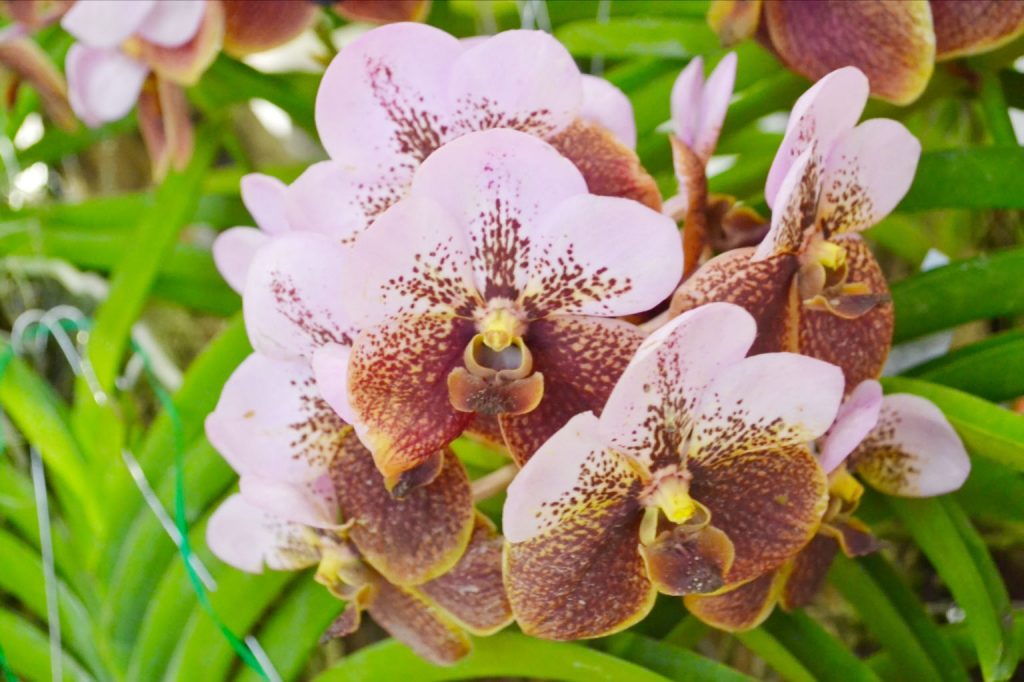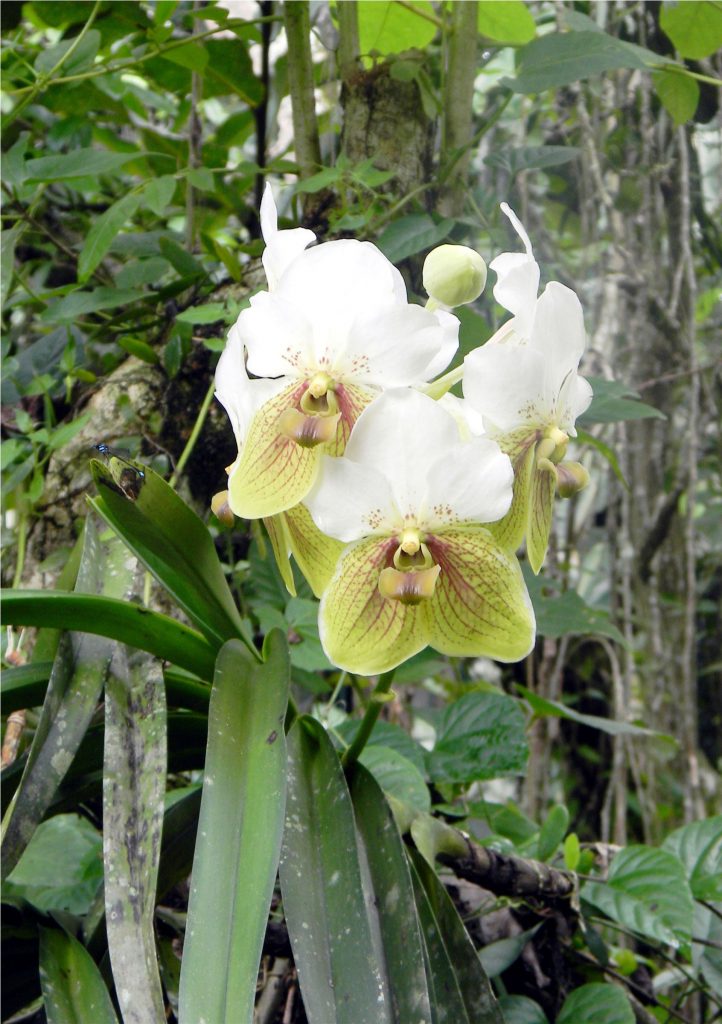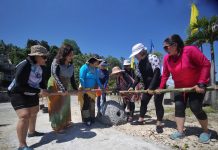
Sampaguita was once taught in schools as the country’s national flower. Later, it was found out that the flower is a native of India.
Enter waling-waling which was named a few years ago as the country’s newest flower icon — thanks to ex-Senator Loren Legarda. It was Senator Legarda who pushed for the declaration of the beautiful orchid as another national flower to make its beauty known to the whole country and to the world.

“The waling-waling’s beauty adorns our treetops, especially in Davao, Cotabato, and Zamboanga where it is endemic. But there are threats to its survival, as the flowers that grow and thrive in the wild are harvested for commercial and decorative purposes, and their habitat is destroyed by deforestation,” Legarda said in a statement.
Waling-waling “is one of the finest orchid species endemic to the Philippines, desired by orchid growers and breeders alike for its showy and attractive flowers and ability to impart its vigor and floral characteristics to its progeny,” wrote Dr. Helen Valmayor in her book, “Orchidiana Philippiniana.”
“A Pictorial Cyclopedia of Philippine Ornamental Plants,” described the exotic waling-waling in these words: “The flowers are flat, to eight centimeters across; the sepals and petals are obviate, bluish pink, with buff-yellow stain, and dull-crimson reticulations on the lateral sepals; the lip is small and concave, purple-red at base, strongly recurved and brownish purple at apex; with three prominent keels.”
The waling-waling, named in “allusion to a moth in flight,” was discovered on Mindanao in 1882. It used to grow on tree trunks in the rainforests of Davao, Sultan Kudarat and other parts of the island. It is worshipped as “diwata” (fairy) by the native Bagobos.

Unfortunately, the exotic orchid is almost on the brink of extinction. “The waling-waling is almost extinct in the wild,” deplored Dr. Domingo Madulid, one of the country’s noted botanists. “Rarer varieties of this plant can only be found in expensive nurseries.”
Recent surveys show that the waling-waling can be found in abundance no longer in the Philippines but in other countries, particularly Singapore, Thailand, Hong Kong, and Hawaii.
It is the best orchid variety of the country, Madulid said. But most Filipinos didn’t know that it could be one of the biggest sources of dollars for the country. In the 1950s, the “systematic plunder” of wild plants, including orchids, started.
Madulid said that long before the country was sending maids to Singapore and Hong Kong, upland farmers had been despoiling the forests and selling rare orchid varieties, such as waling-waling, abroad.
There’s an interesting on how the world came to know waling-waling. Valmayor, in her very informative book, shared this story: “One of the most successful and secretive collectors was Carl Roebelin, who was in the employ of Frederick Sander of the Orchid House of Sanders at St. Albans, England.
“About 1879, the Spanish government of the Philippines initiated a regular mail service between Manila and Mindanao. This provided a satisfactory means of sending collected plant material from the southern island to Manila. Consequently, Sander commissioned Roebelin to explore Mindanao for spectacular and still undiscovered orchids.”
It was February or March of 1880 when Roebelin came to Mindanao in the Bay of Illana near Cotabato. The place was described as “a very mountainous region on the western side of Mindanao.”
Valmayor added this additional information: “At that time, only the coastal regions and some rivers were controlled by the Spaniards. The interiors were populated by hostile tribes who were wary about white intruders.”
The story continued: “Earlier, (Roebelin) had heard of stories from natives about an orchid that grew on trees in mosquito-infested jungles with ‘flowers as big a dishpans.’ This whetted his appetite to seek the mysterious orchid, thinking of fabulous prices it would command in Europe.
“To reach the area, Roebelin had to travel with Sam Choon, half Chinese and Filipino, for apparently he was the only one who could trade safely with the natives. (The two) sailed up the river towards Lake Magindanao to the interior village of a rather peaceful tribe, the Subanons. They lived above the mosquito zone in tree houses about 50 feet above the ground. These raised dwellings protected them from the marauding warlike Bagobos, who would attack the villagers at night. Ladders for the tree houses made up of tree trunks were pulled up for the night, making them safe from raids of the Bagobos.
“Roebelin slept for the night in one of these tree houses very close to the tree branches. While asleep he was awakened by a loud roar and the shaking of the flimsy thatched hut. He was sure it was an earthquake and proceeded to tie himself to a branch while the shaking continued. He dropped off exhausted, fell asleep, and when he woke up in the morning he saw the beautiful spray of purple and brown flowers which the natives called as ‘waling-waling.’”
Roebelin took some plants and mailed them but they never reached England, “as themail service was disrupted by the earthquake.”
Valmayor wrote: “Roebelin returned to England with only an illustration of waling-waling, but he was again dispatched by Sander to go back, and this time he did secure the orchid.”
When the orchid flowered in England in 1882, German taxonomist Heinrich Gustav Reichenbach named the plant after Sander, hence the name “Vanda Sanderiana,” or “Euanthe sanderiana,” as another taxonomist preferred to call the plant.
After that, Sanders introduced waling-waling to orchid enthusiasts and lovers in London the following year. Since then, it has influenced another thousand or more colorful and attractive vandaceous hybrids that are now part of the world’s multibillion-dollar orchid and cutflower industry.
For almost a century, waling-waling disappeared in the Davao gardens. But thanks to Charita Pentespina, it has “returned” to its native home. Then a neophyte orchidist, Puentespina successfully pioneered in mass producing the waling-waling through embryo culture in 1985.
During the 48th Araw ng Dabaw, the first waling-waling seedlings in compots (community pots) were sold to the public, which in no time generated interest among hobbyists and commercial orchid growers.
Since then, the waling-waling has become a fixture in almost every garden in Davao. “The return of the waling-waling to every home garden in Davao and elsewhere in the country is one thing,” one noted author wrote. “It is another thing to see it bloom in its habitat at the foothills of Mount Apo.”
Yes, waling-waling is endemic to the country. “Our national symbols are vital to our identity as Filipinos,” Legarda pointed out. “As we discover more about ourselves, we must also update the symbols that represent us. I believe that initiatives to do so increase the engagement of everyday Filipinos with the symbols of our nation, and aid in our nation-building process.”





